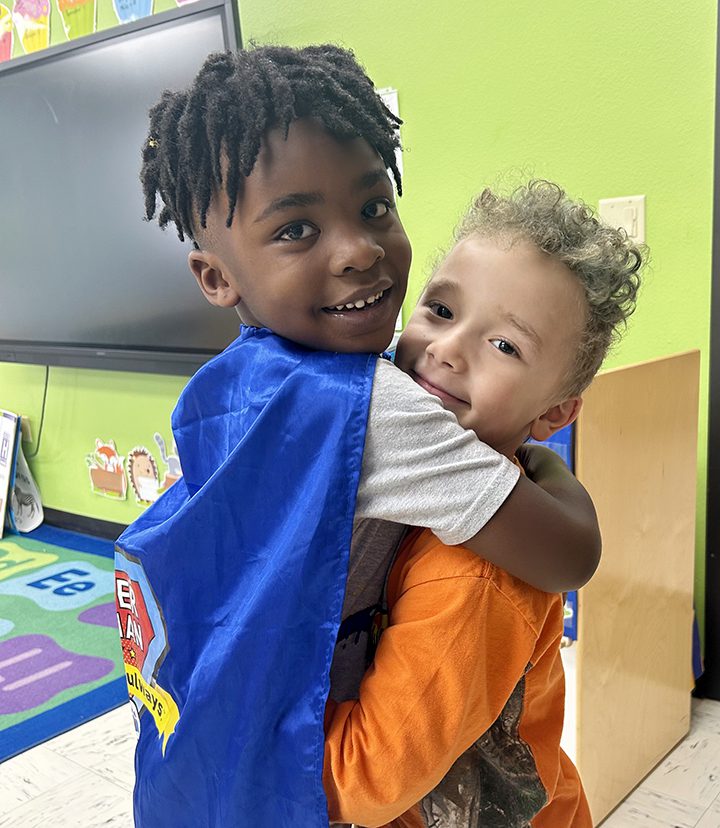6 Ways Social-Emotional Learning Can Support Trauma-Sensitive Schools
June 5, 2019

In our first installment of our series on trauma-sensitive schools, we discovered how common trauma is among school-age children, and how it shapes every dimension of students’ experience. With half of all students suffering some sort of serious trauma, it becomes imperative for schools to address the needs of their communities. To help these students heal, learn, and grow, educators are leading a movement to make schools trauma-sensitive.
According to the Trauma and Learning Policy Initiative (TLPI), trauma-sensitivity involves six core attributes:
- A Whole-School Commitment Shared by All Faculty and Staff
- A Safe School Environment
- A Holistic Approach
- A Supportive Environment Where Students Practice Developing Skills
- Team Responsibility for All Students
- Adaptation to the Changing Needs of Students
What’s left open to interpretation is how schools satisfy these commitments.
Enter: Social-Emotional (SEL) Programs.
Social-Emotional programs help trauma victims heal
Focused on developing the whole child and the school community, SEL curricula offer an ideal scaffolding for promoting trauma-sensitivity school-wide.
To see how SEL programming supports trauma-sensitive schools, consider how it contributes to the six principles described above:
A Whole-School Commitment Shared by All Faculty and Staff
In trauma-sensitive environments, no single administrator or faculty member shoulders the task of caring for students dealing with severe adversity. Everyone from the principal to the janitor is a stakeholder.
But what unifies their approaches? How do you get personnel with different training operating in different orbits on the same page?
While there’s more than one way to align staff approaches to student trauma, an SEL curriculum, along with tied-in professional development training, provides a coherent orientation to caring for students. If SEL is adopted school-wide, properly-trained staff, at every level, will be equal participants in a common program.
Students experience a consistent, sequenced, and integrative approach to developing emotional wellness and social skills.
The advantages of this focused programming, along with proper P.D. educator training, is an obvious solution over improvised strategies.
 A Safe School Environment
A Safe School Environment
Safety is the precondition for all trauma-sensitive schools. When home is unpredictable and dangerous, school must be a haven for psychological, academic, and interpersonal growth.
To make schools safe spaces, SEL curricula seek to promote awareness not only of physical threats, but also the “sixth sense” of intuition and behavioral management. Students learn to stick up for each other. They investigate both general topics like using respectful language and specific issues like cyberbullying. They learn to accept themselves, work with others, develop self-confidence, and practice managing stress with resilience. All of these traits are essential for children to feel safe in the classroom as well as the hallways.
Equipped with these lessons, faculty and students alike feel empowered to create a school culture safe for exploration and growth.
A Holistic Approach
Proponents of trauma-sensitive schools endorse a holistic approach because the roots of adversity never flower in a single place. Traumas can become manifest in math class or at the lunch table, just before the first bell rings or after the last class is dismissed.
That means personnel helping students navigate mental health issues or difficult circumstances can’t focus on an isolated part of the picture while neglecting aspects that may be affected. Only an approach that integrates different dimensions of students’ lives can help them flourish.
By definition, SEL programs must nurture the whole person. They cover compassion, respect, responsibility, and perseverance. Empathy and forgiveness might feature alongside conflict management and kindness.
And as it turns out, addressing the whole child yields results. For example, students enrolled in SEL programs score higher on standardized tests, and are more likely to realize success and happiness than their peers.
A Supportive Environment Where Students Practice Developing Skills
It’s one thing to talk about empathy and courage. But, like rehearsing a play or scrimmaging against the junior varsity, we learn best when we develop a skill in practice.
SEL programs offer a rare opportunity for focused practice of character traits and social skills. Respectful “reminder” signs in the classroom and hallways help augment the whole school culture shift. They offer not only direction, but space structured for students to work together on regulating emotions, developing confidence, and cooperating with each other.
Team Responsibility for All Students
Again, in trauma-sensitive schools, all faculty members take responsibility for students. The challenge is to unite teachers around a coherent approach. A curriculum taught at each grade level brings teachers, students, and administrators together.
Adaptation to the Changing Needs of Students
Every community is singular. Every student is unique. Every trauma carries its own challenges.
Shoehorning everyone into a one-size-fits-all mold won’t help. But a customizable SEL curriculum that invites dialogue and encourages creativity can.
Traumatized students need a balance of structure to guide their emotional regulation while giving them freedom to explore. A well-designed social-emotional learning program should have this – and allow students to enjoy their learning experience.
There’s no single paradigm for implementing trauma-sensitive initiatives. But research-based SEL programs can go a long way toward creating a safe, supportive learning environment that aligns faculty in their mission and nourishes the whole child.
This is the second installment of a two-part series.
Respectful Ways offers social-emotional learning curriculum for three age groups: PreK-2, 3-5, and 6-12 students using interactive, digital modules on compassion, perseverance, respect and responsibility, as well as Conflict Resolution, Emotional Regulation, Mental Health, Personal Safety, and Trauma-Affected Students.
Photo by Matheus Bertelli from Pexels
This entry was posted in SEL News. Bookmark the permalink.


 Our 1st graders loved the Be Kind: It Feels Good course. The Kindness Hunt and bucket filling activities were the best. Very engaging.
Our 1st graders loved the Be Kind: It Feels Good course. The Kindness Hunt and bucket filling activities were the best. Very engaging. The Bored, Get Creative module was perfect for our 4th graders pre-winter break. We talked about things they could do if “bored”.
The Bored, Get Creative module was perfect for our 4th graders pre-winter break. We talked about things they could do if “bored”.